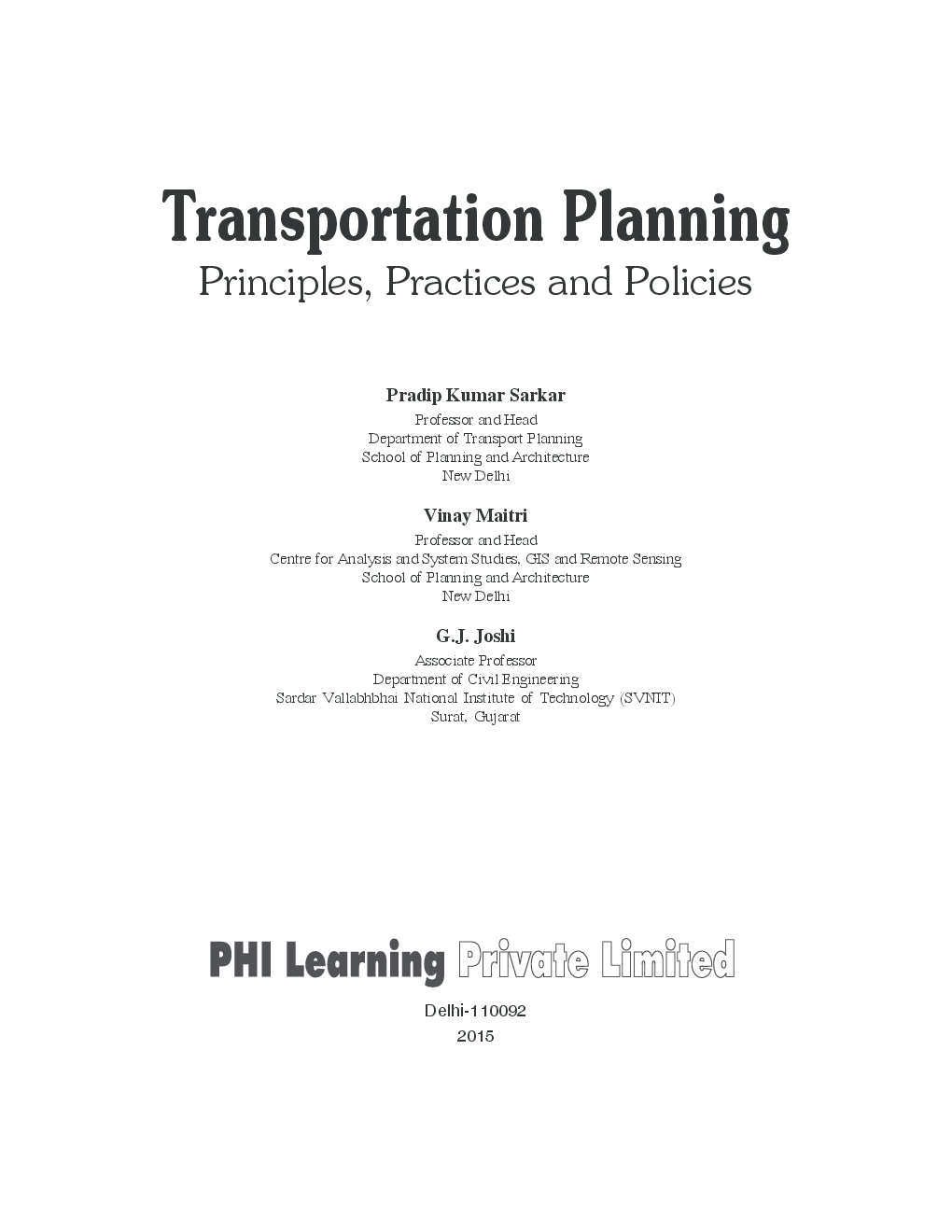Transportation planning plays a useful role as a lifeline for any society. It comprises applications of science and art, where a great deal of judgement coupled with its technical elements is required to arrive at a meaningful decision in order to develop transportation infrastructure facilities for the community. Transportation planning, thereby, helps in achieving a safer, faster, comfortable, convenient, economical and environment-friendly movement of people and goods traffic.
In this context, an attempt has been made to write a comprehensive book on this subject, which not only deals with the basic principles and fundamentals of transportation planning but also keeps abreast of the current practices and policies conducted in transportation planning.
Divided into 23 chapters, the book felicitously proffers the fundamental techniques of transportation planning and travel demand modelling, urban form and urban structure and their relation with transport pattern, land use-transport model, accessibility and mobility consideration in transport modelling, graph theory and road network planning, cost benefit analysis, mass transport planning, applications of intelligent transport system, applications of software in transport planning, and transport policies.
Exploiting a systematic approach avoiding prolixity, this book will prove to be a vade mecum for the undergraduate and postgraduate students of civil engineering and transportation engineering. Besides, this book is of immense benefit to the students opting a course on Master of Planning conducted in various institutes.
Highlights of the Book
Systematically organised concepts well-supported with ample illustrations
Prodigious illustrative figures and tables
Incorporates chapter-end summary to help in grasping the quirk concepts
Presents state-of-the-art data
Includes chapter-end review questions to help students prepare for examination
Preface.
1. Introduction to Transportation Planning. 2. Study Area. 3. Transportation Planning Surveys. 4. Travel Demand Forecasting Techniques. 5. Trip Generation Model. 6. Trip Distribution Models. 7. Modal Split. 8. Mode Choice Modelling through Stated Preference (SP) and Revealed Preference (RP) Data. 9. Traffic Assignment. 10. Freight Movement Study. 11. Long-term Transport Planning. 12. Regional Transportation Planning. 13. Accessibility and Mobility Considerations in Transport Planning. 14. The Lowry Land Use-transport Model. 15. Transport Supply. 16. Graph Theory: Approach to Road Network Planning. 17. Intermodal Integration. 18. Urban Form, Urban Structure and Relationship with Transport Pattern. 19. Cost Benefit Analysis. 20. Transit Planning, Design and Scheduling. 21. Applications of Intelligent Transport System. 22. Applications of Software in Transport Planning. 23. Transport Policies.
Annexures. Index.


















